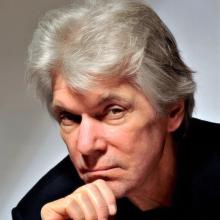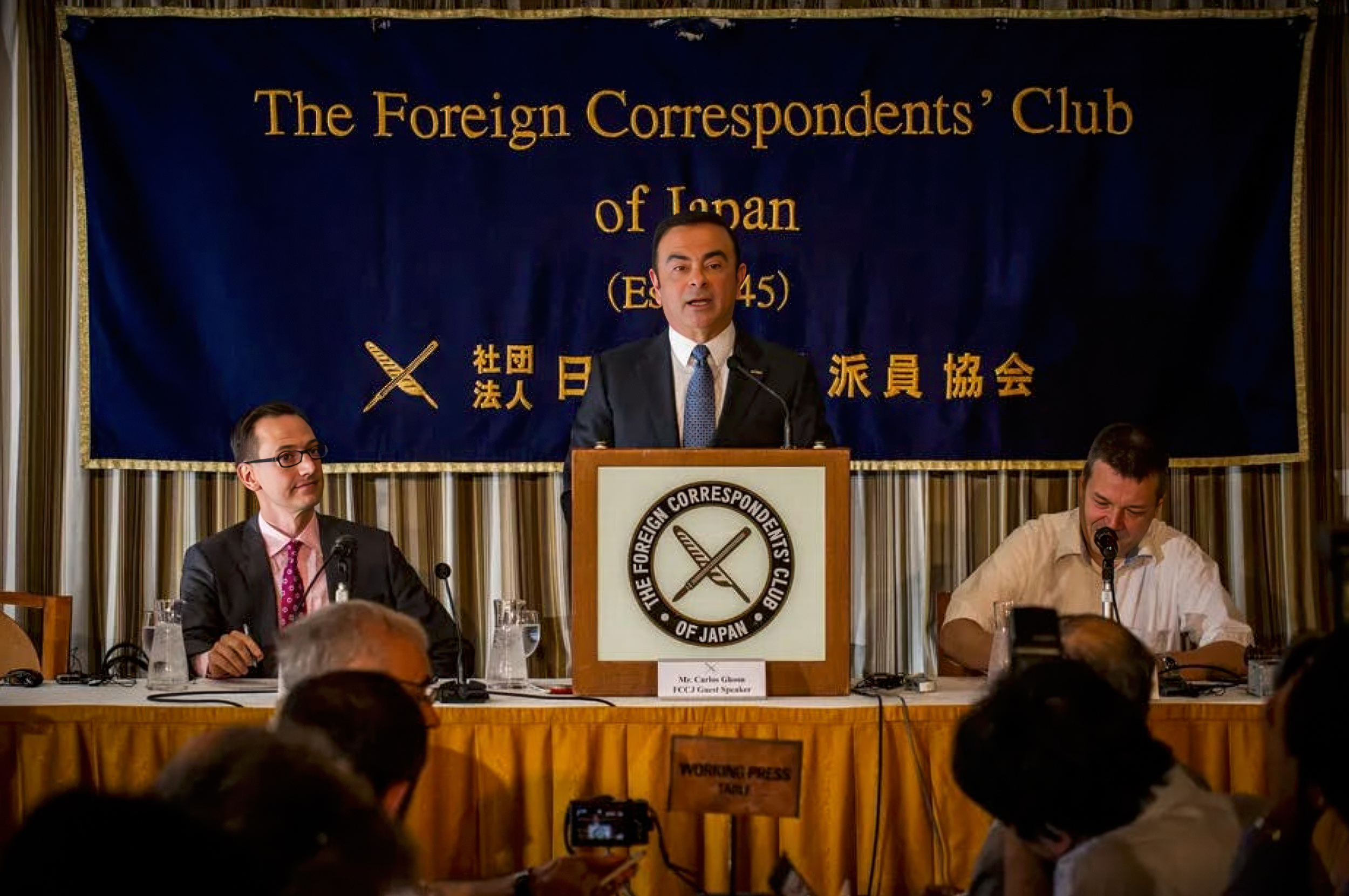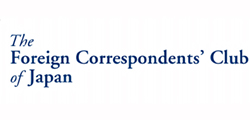Issue:
August 2025 | Club History Part 1
The first in a three-part series on the history of the FCCJ

The Foreign Correspondents’ Club of Japan is a venerated institution that has been based in Tokyo since 1945. Rich in history, it has been a magnet for world leaders, movie stars and other famous people. Its interior walls are covered with photos of famous individuals who have spoken or appeared there: Muhammad Ali, Gina Lollobrigida, Ronald Reagan, Willie Nelson, the Emperor and the Empress of Japan, a young Donald Trump, Roger Moore, Maradona, Sting, Tony Bennett, Princess Margaret, Rachel McAdams (promoting the Academy Award-winning film Spotlight), Carlos Ghosn, and Major League Baseball Commissioner Rob Manfred. The club has also welcomed some of the most influential Japanese public figures: Shintaro Ishihara, Mao Asada, Ken Watanabe, Yuriko Koike, Junichiro Koizumi, Hayao Miyazaki, Hideki Matsui, Yuzuru Hanyu, Prime Minister Fumio Kishida, to name but a few.
I became a member in 1982 when the club was located on the wood-panelled 20th floor of the Yurakucho Denki Building. It played an important role in both my work and social life. I gave press conferences and Book Break talks there on each of my books and even served on the board as a vice-president. I particularly liked the Main Bar, which offered a panoramic view of the Tokyo skyline, including the Imperial Palace grounds, as well as a ringside seat to many a drunken argument between journalists.
The FCCJ was established by and for journalists who had landed in Japan at the end of World War II with General Douglas MacArthur, in order to provide essential services to facilitate the task of transmitting the news of Japan to the world when no such facilities existed in war-torn Tokyo.
At the time, except for a few magnificent Western-style buildings and the Imperial Hotel, which survived the incendiary bombing in the last days of the war, Tokyo had been reduced to ashes by B-29 bombers, and barely an identifiable street remained. Many reporters had been staying at the Dai-Ichi Hotel in Shimbashi, but U.S. military regulations in place there had hampered their activities. In December 1945, with the help of the Occupation authorities, they secured some living and workspace in Marunouchi, in an old grimy five-story, red-brick building with broken windows, leased by the Marunouchi Kaikan from the Mitsubishi Estate Company. The ramshackle structure, just minutes on foot from MacArthur’s General Headquarters in the Dai-Ichi Building across from the Imperial Palace moat, had once been a restaurant. It was the first of four locations the Club would occupy and was prominently featured in the 1950 espionage film Tokyo File 212, available on Amazon, for those who wish to see it. Reporters moved in five to a room, not counting their new live-in Japanese girlfriends, using sheets for partitions. This annoyed BBC correspondent John Morris, who prudishly insisted that the sex act was meant to be performed in private.
“Drunken brawls were frequent,” wrote Morris in a memoir entitled The Phoenix Cup, “and there were times when firearms were discharged in the club. It was a cross between a waterfront sailors’ bar and a brothel.”
The FCCJ quickly became the hub of the international community that reemerged from the ashes of war. Unlike the U.S. servicemen and members of the Occupation Headquarters, who had privileges to procure American supplies at the military exchanges, most journalists in Tokyo had to make do shopping at local stores, which rarely carried what they wanted. Any kind of half-decent whiskey, cheese, or ice cream was very hard to come by. Club members, who hailed from all over the globe, wrote home to family and friends for recipes. Japanese cooks working at the FCCJ were given survival courses on making pizza and hamburgers, which they had never seen, much less tasted.
In its early years, The club was home to a number of remarkable newsmen, such as NBC’s legendary war correspondent John Rich, who covered the International War Crimes Tribunal in Tokyo, interviewed “Tokyo Rose”, and was once called upon to serve as an impromptu interpreter for wartime Prime Minister Gen. Hideki Tojo and his American lawyer. Others included Pulitzer Prize winners Max Desfors, who photographed Japan’s surrender aboard the USS Missouri in September 1945, and Hiroshima author John Hershey, along with Russell Brines and Harry Emerson Wildes, authors of the classics MacArthur’s Japan and Typhoon in Japan.

A major topic of discussion was Tokyo Diary, a novel by a former FCCJ president and United Press correspondent Ernie Hoberecht, which he dictated to his secretary and had translated by Yasuo Okubo (whose translation credits included Gone with The Wind). It became a huge bestseller.
First published in Japanese in 1946, it was the story of a Japan-based American correspondent who falls in love with a Japanese movie star, in an affair that had to be kept an utmost secret because the actress’s studio forbade any such fraternization. The plot included a murder and other such complications, but the most popular part of the book was the description of a kiss, which TIME magazine said went into “great quivering detail”. Kissing, if done at all at that time in Japan, was a very private thing. It thus became the first book to teach the swooning Japanese public about the “American kiss”.
Hoberecht had already made the news in Japan when he visited a movie set to meet the popular actress Hideko Mimura. As related by Charles Pomeroy in his book on the FCCJ, Hoberecht told her that General MacArthur had suggested that kissing in movies in Japan would be “a step toward democratization”. So Hoberecht swooped up Mimura in his arms and kissed her on the lips. The actress immediately fainted and had to be carried to her dressing room. It was sensational national news. The actress later wrote to Hoberecht to say she didn’t think they should meet anymore.
Tokyo Diary brought in 10 times Hoberecht’s salary as a bureau chief. After reading the steamy novel, the Japanese government questioned his qualifications as a journalist.
Years later, according to a piece in the Number 1 Shimbun, the FCCJ’s monthly magazine, the American writer James Michener was asked from the floor after a lecture at Waseda University: “How do you compare the literary accomplishments of Jean Paul Sartre and Earnest Hoberecht?”
His Japanese audience was dumbfounded when Michener admitted he not only had never read Hoberecht, but had never even heard of him
Hoberecht’s novel was subsequently published in English. Life Magazine, in a five-page story, declared it the “worst novel of modern times”. Hoberecht took great umbrage at this, saying: “That’s not true. I’ve written worse myself.”
The primary reason for Hoberecht’s success in Japan was undoubtedly the limitations imposed by the GHQ on imported U.S. books sold in Japan in translation. MacArthur had instituted a regulation requiring Occupation administrators to check every U.S. book being translated for accuracy, to prevent exploitation and possible harm to U.S. interests, creating a Civil Censorship Department that also examined Japanese newspapers and magazines that could be deemed in violation of MacArthur’s press code. Thus, for a time, no U.S. novels, including those by Hemingway and Steinbeck, could come in, even though there was very strong demand. (Longtime FCCJ member Ichiro Urushibara, born in the UK as son of a renowned woodblock artist living in London, first found work as a publications examiner in the CCD upon returning to Japan as 17-year-old teenager. His job was to mark parts of and translate them into English.) As a result, a product-starved Japanese publisher approached Hoberecht to simply dictate a story, any story, assigning the man who had translated the prewar best seller GWTW to put it into Japanese. A formula for success was born.
Hoberecht wasn’t the only star. Former FCCJ president Burton Crane, a New York Times correspondent during the Occupation, sang Japanese-language versions of popular Western songs of the day and became known as the “Bing Crosby of Japan”.
Another huge best seller in Japanese was Japan Diary by the Toronto Star’s Mark Gayn, about first year of the Occupation. Published in 1948 in Canada by William Sloane Associates, its Japanese edition reached number one on the bestseller list and stayed there for an entire year.
Newsman and documentary filmmaker Ian Mutsu, born to a Japanese aristocrat and an English mother, his grandfather a minister in the Meiji government, literally cornered the market postwar for newsreels about Japan being broadcast around the world.
In 1954, the club moved into a new building down the street in Marunouchi. The regulars who congregated daily in the bar were a who’s who of the region’s most celebrated writers and other personalities, politicians, entertainers, royalty, and Asia’s busiest spies.
Michener would be holding court in the dining room, talking about which of his latest novels were to be turned into hit movies in the years since his breakaway blockbusters South Pacific, Sayonara, and Teahouse of the August Moon, all of which of which deeply influenced the world’s view of the Asia-Pacific. Michener introduced the then future U.S. Ambassador Edwin Reischauer to his future wife, the journalist Haru Matsutaka, over lunch at the club in 1955. Upon being appointed ambassador, Reischauer convinced JFK to send the Attorney General Robert F. Kennedy over to appease rising anti-U.S. sentiment. His epoch-making success in winning over their hearts is still endlessly discussed in Japan.
Ian Fleming could also be seen at the FCCJ night after night in 1962 with former colleagues from the Sunday Times, conducting research for You Only Live Twice. Every businessman and spymaster of note needed to be there, such was the convergence of news and deal-making at the club. Associated Press’s John Roderick, who marched across China with Mao Tse Tung, was another famous presence, as were Chicago Tribune reporter Sam Jameson, and TIME/Newsweek correspondent Frank Gibney, author of Five Gentlemen From Japan. Gibney chronicled Japan’s Olympic-era growth and the flood of great products the country manufactured, starting with cameras, TV sets and automobiles.
The Club was featured in scenes from the 1962 Hollywood film, A Girl Named Tamiko, starring Laurence Harvey.
Among a host of Japanese from the worlds of politics, business, entertainment and sports who spoke at the club during this era, one of the most memorable was Kakuei Tanaka, a kind of Japanese Lyndon Johnson – rough-hewn and self-made – who appeared in 1974 when he was prime minister. Tanaka was grilled about shady land deals detailed in October 1974 by the popular Bungei Shunju magazine, in which he had used the name of a geisha he had “purchased” in his various real estate transactions. He was so offended he stormed out of the room before the allotted time was up. It wasn’t just the hostile questioning from the assembled group of reporters that had angered Tanaka: his introduction, by the FCCJ’s first vice-president, Bela Elias, a Hungarian communist, while jesting in tone, was so filled with offensive remarks that a group of reporters saw fit to write an official letter of apology to the Prime Minister’s Office.
Parts of this story originally appeared in Whiting’s book Tokyo Junkie (Stone Bridge Press, 2021).
Robert Whiting is a best-selling author and journalist who has written several successful books on sport and contemporary Japanese culture, including You Gotta Have Wa (1989), The Meaning of Ichiro (2004), Tokyo Junkie (2021) and Gamblers, Fraudsters, Dreamers & Spies: The Outsiders Who Shaped Modern Japan (2024).

